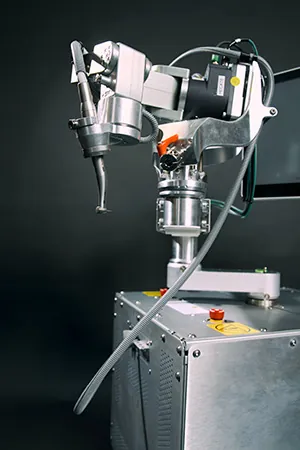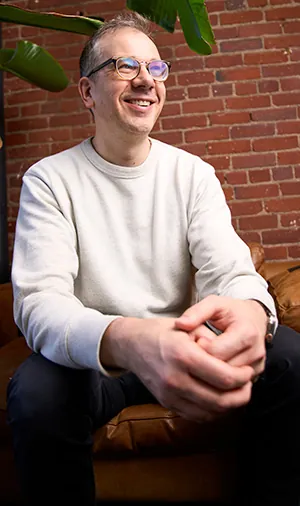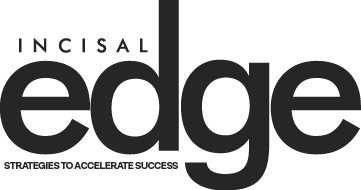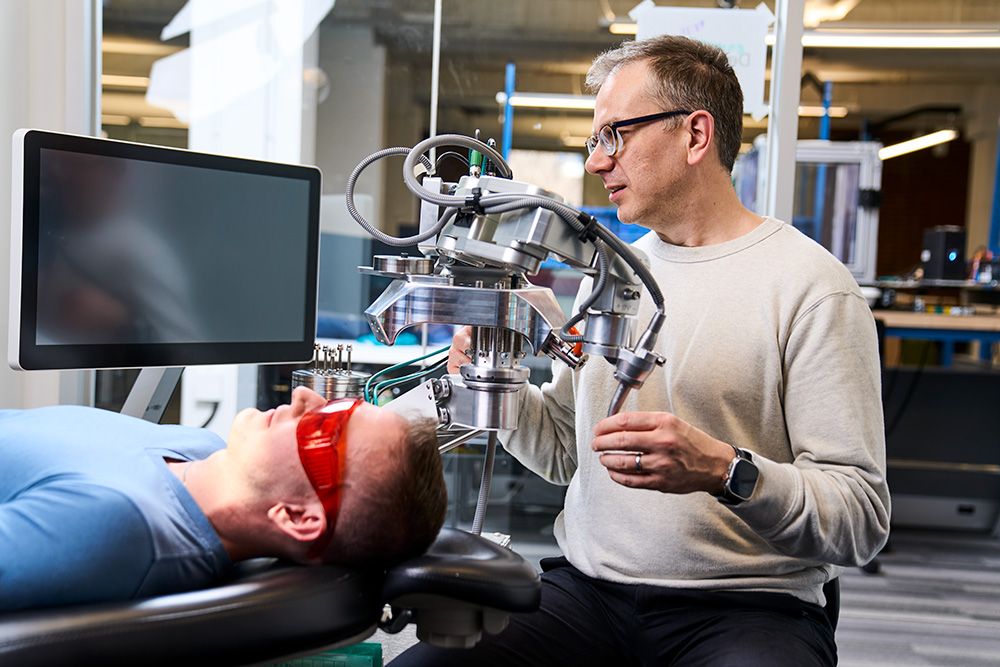Perceptive is a startup leading the way in the development of A.I. robotics to improve and streamline the practice of dentistry. Its founder and CEO discusses product development, productivity and why dentists have nothing to fear from the A.I. revolution.
By Jerry Markon
DR. CHRIS CIRIELLO does not want for grand ambitions. The founder and CEO of Perceptive, a Boston-based startup, is building an artificial intelligence‑powered dental robotics system that the company says aims to complete “restorative procedures an order of magnitude faster and more accurately than any human.”
That would mean 15-minute crowns, courtesy of a new imaging system that uses advanced AI to tell a robot where to cut teeth. Yet as Dr. Ciriello discusses the system, he speaks in less-sweeping terms, offering no talk of, say, futuristic robots roaming the planet or a total AI takeover of human tasks.
For Dr. Ciriello, a native Canadian who treated patients in rural areas of his home country, it all comes down to something more basic: dentists’ productivity. He mentioned the word no fewer than 15 times during a one-hour interview.
“Almost every dentist wants to improve productivity,” says Dr. Ciriello, 45. “If we can reduce procedure times and improve outcomes and accuracy, we think there will be huge demand for a product like this.”

As Dr. Ciriello and his team labor over their robotics system, the company in July announced the completion of the world’s first robotic tooth preparation on a human, calling it a breakthrough for dentistry. The procedure, a crown, was performed in Barranquilla, Colombia. His robotics system does not yet have FDA approval, and he would not reveal when it might be released for use by dentists.
Here, Dr. Ciriello discusses his robot and the AI that enables it—and offers some choice words for anyone who fears that AI will lead to robots replacing dentists. (This interview has been edited for length and clarity.)
Tell us about the robotics system Perceptive is developing. What kinds of breakthroughs are you expecting?
We want to help reduce procedure time for patients, improve accuracy and increase dentists’ productivity. We’re introducing a tool for restorative procedures—fillings, crowns, bridges—and we’re parallelizing the workflow, the manufacturing of the restoration with the cutting of the tooth.
Basically, we have a scanning technology that can see inside the tooth in 3D, which enables us to make the restoration before we cut the tooth. Today, you can’t start making the restoration until after you’ve cut the tooth, and making it can take two weeks. With our system, as soon as the robot is done cutting the tooth, the dentist can put in the restoration right away. That’s how we do 15-minute restorations. It’s a huge value proposition.
What exactly does the robot do?
It cuts the tooth—it’s a preparation system. It’s not a humanoid robot walking around. It’s just a tool that cuts the tooth according to the dentist’s plan.

If you ask any dentist, a big part of cutting the tooth is knowing where to cut. So how does a robot know? It can’t use an X-ray; they’re two-dimensional. Your tooth is in 3D. We had to develop a new imaging modality that can see inside the tooth in 3D, and we used AI on that data to understand what that image is. Once we know that, we can tell the robot where
to cut the tooth, and you can simulate the final impression before you cut. The robot would not know where to cut without imaging and AI. We’re developing a new AI model to detect and localize caries, cracks and more using optical coherence tomography, or OCT, imaging. I don’t think anyone in dentistry is doing anything like this.
Why now, exactly? Which technologies have matured to the point where you felt that a startup could develop a viable,
reasonably affordable AI robotics solution?
Compute and AI. All the pieces of our supply chain have advanced in ways that have enabled this to happen. Five years ago, we probably wouldn’t have had the compute to do it. Also, hardware components were not as good. AI models were less defined.
There are large multinational dental companies with big engineering teams and, seemingly, the resources to do robotics. What do you know that they don’t?
There really hasn’t been a lot of innovation in the last 30 years in dentistry. Big companies have established products and profits, and your incentive is to not rock the boat. As a startup, we’re focused on only one problem, and the people working on it are highly incentivized. They get paid only if it works.
We’re developing a new A.I. model to detect and localize caries, cracks and more using optical coherence tomography, or OCT, imaging. I don’t think anyone in dentistry is doing anything like this.”
When will this hit the U.S. market?
We also have an imaging product, which has imaging and AI built into it, which will launch in 12 to 18 months. We’re not disclosing the timeline for our robotics product.
Dentists can be slow to change, and some are skeptical or even alarmed about robotics and AI. Will there be enough early adopters out there, do you think, to make this product successful at launch?
We’ve seen huge demand for what we’re making. A lot of people are investing in our company. A huge number of dentists have signed letters of intent.
How can the profession be a responsible steward of AI and ensure that it doesn’t replace or overrule humans?
That’s a nonsensical fear. There is no universe in which dentistry will ever work without the dentist. AI is a tool, and we are building a tool for dentists. Our tool cannot operate without a dentist. It’s not autonomous. It cannot walk around and talk. Someone has to attach it. Someone has to approve the treatment plan. There are now powered screwdrivers. Did that get rid of carpenters?




